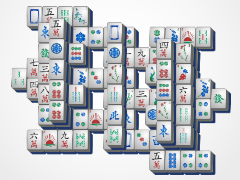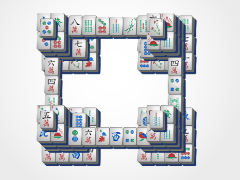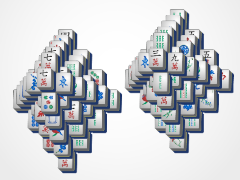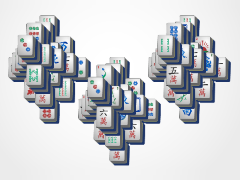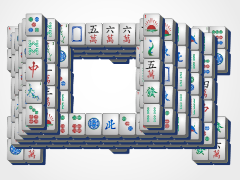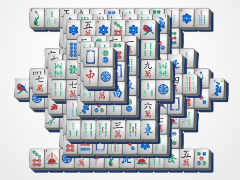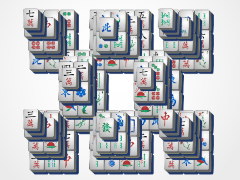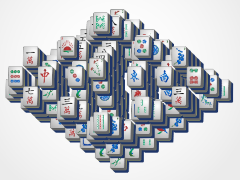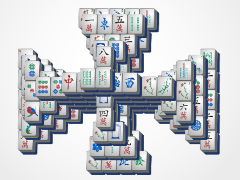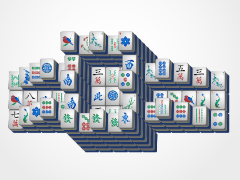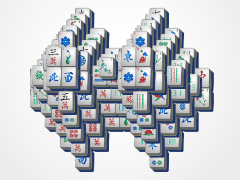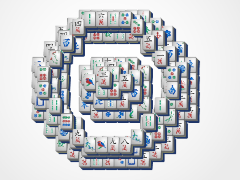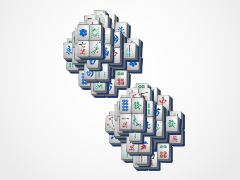Mahjong In The Digital Age And Why It's A Global Phenomenon
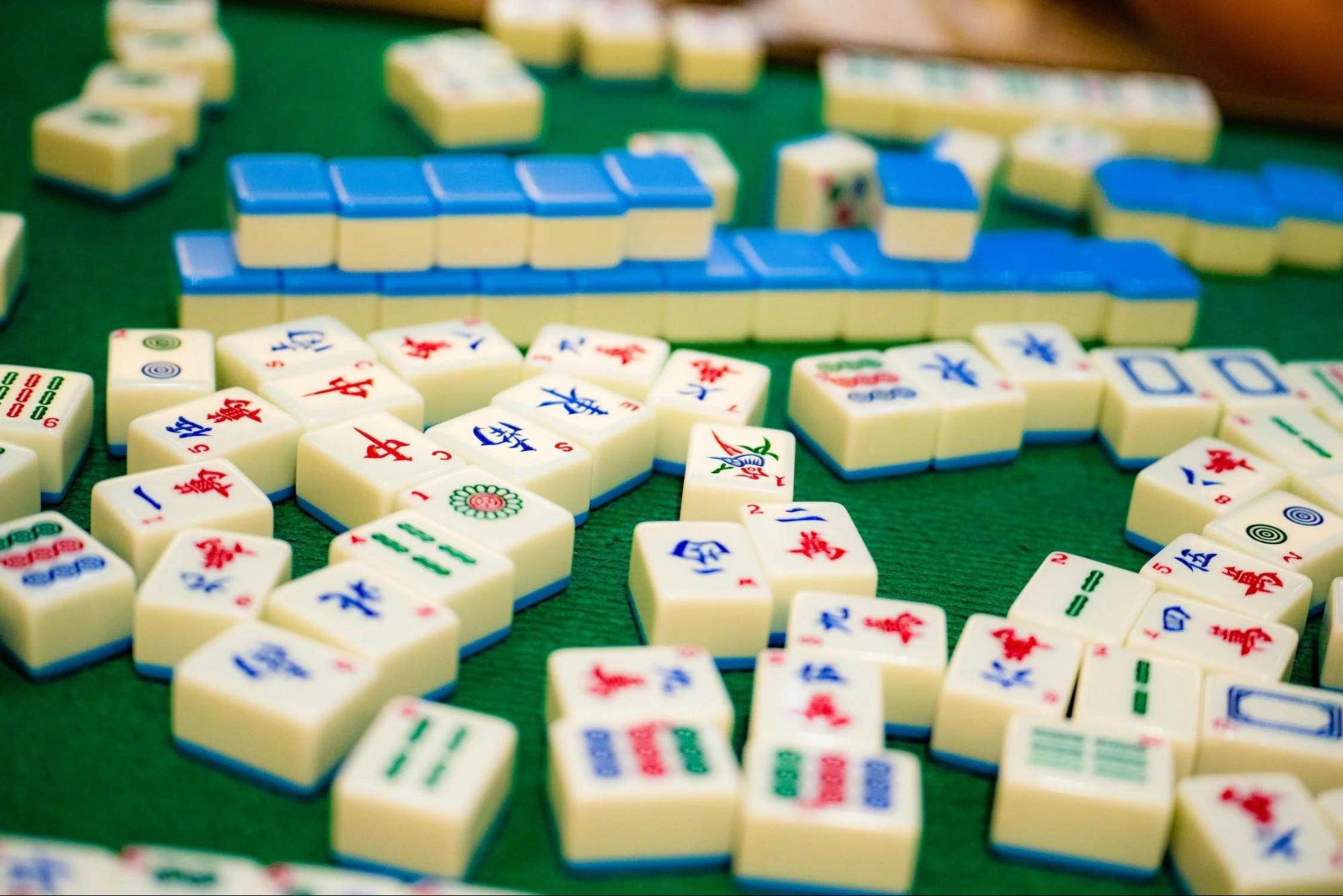
Mahjong is a tile-based game that originated in China in the nineteenth century and has since gained worldwide recognition and popularity. The game and its regional versions are popular throughout East and Southeast Asia and have even gained popularity in Western nations. Experts estimate that at least 600 million play this beautiful game worldwide, thanks to the game morphing over the years into something bigger beyond the Asian world. The game has also been turned into a popular internet option. Mahjong, like the Western card game rummy, is a game of skill, tactics, and luck. This article discusses how AI has transformed the game, and why it has become a popular option for many.
Choosing the right digital playground
Mahjong enthusiasts in the digital world are spoiled for choice when it comes to websites that provide this ancient game. Selecting the proper platform is a critical step in guaranteeing a pleasurable, exciting, and personalized gaming experience. One thing you need to consider is the user interface and accessibility. A website or app with an inviting or welcoming user-friendly interface can boost your gaming experience. Prioritize platforms that have easy navigation, customizable settings, and eye-catching designs. Some also provide a variety of Mahjong game modes, so feel free to consider this. Mahjong is a socially inclusive game beyond the strategies and the tiles. Therefore, choose gaming platforms or websites that encourage the social nature of the game through the integration of chat rooms and community events. You can learn and make new connections by being an active member of these communities.
The integration of AI opponents in Mahjong
A lot of games have integrated artificial intelligence into their digital versions, and Mahjong is no exception. The presence of artificial intelligence in online platforms offers a challenging and dynamic gaming experience every time you play. These opponents are programmed and designed in such a way that they can quickly and easily adapt to your skill level. In addition to this, many platforms have included challenges and rewards, adding a unique layer of motivation and excitement to the gameplay. Unlocking achievements and rewards helps you showcase your progress as a solo Mahjong game player and also keeps the game engaging throughout. Moreover, solo gaming is no longer limited to your PC with the emergence of mobile apps. Browse and explore Mahjong applications that provide on-the-go solitary gaming experiences, letting you test your gaming prowess at any time and from any location.
Utilizing tutorials and strategy guides to play Mahjong
Online platforms such as apps and websites usually add an interactive lesson that guides newbies through the fundamentals of the Mahjong game. To enhance your gaming experience, look for platforms that offer step-by-step training for understanding the tiles, learning the laws, and mastering basic tips and tricks. Because interactive courses are experiential, even novices can understand the game quickly. Digital platforms also give in-depth strategy tips for gamers who are looking to improve their game. Such tactics include reading the opponent's moves, smart tile discards, and perfecting defensive play. Some online platforms include video tutorials for visual learners. They break down difficult methods and allow you to watch live feeds of skilled players demonstrating their playing techniques in real-time. These video materials offer innovative ways to master the Mahjong game.
Global variations of Mahjong
Chinese classical Mahjong
It is the earliest type of Mahjong, which was imported to America under various titles in the 1920s. It is popular in the West.
Cantonese or Hong kong Mahjong
This is the most common type of Mahjong, which is different from the Chinese classic in minor scoring.
Competition Mahjong
It is an international standard that some Mahjong associations have established for competitions, and in some circumstances, all play.
Singaporean Mahjong
It is identical to the Cantonese Mahjong, which is popular in Malaysia. The four animal tiles (centipede, cat, mouse, and cockerel) are unique, as are various scoring system variations that allow rewards midway through the game if specific requirements (such as Kang) are satisfied.
South african Mahjong- a variant of cantonese Mahjong
It plays similarly to Cantonese Mahjong and adheres to the majority of its rules and restrictions. However, there are some variances in scoring, such as the maximum number of points a hand may be awarded, which varies based on the house rules. A chicken hand is typically regarded as a value hand. Flowers are also utilized to improve scoring depending on the house rules.
Korean Mahjong
It is distinct in many respects and is a great three-player variant. One outfit (typically the bamboo set or 2-8 of bamboo) and the seasons are missing entirely. The scoring is simpler, and the gameplay is faster. There are no merged chows permitted, and disguised hands are prevalent. Riichi (like its Japanese counterpart) is also an important feature of the game—Korean rules.
American Mahjong
It is a type of Mahjong regulated by the national Mahjong league and the American Mahjong association. It employs jokers, the Charleston, and melds of five or more tiles. Purists argue that this makes American Mahjong a distinct game. Furthermore, the National Mahjong League and American Mahjong Association versions, which differ by small scoring variances, are generally referred to as Mahjongg or mah-jongg.
Western classical Mahjong
It is a descendant of the Mahjong introduced to America in the 1920s by Babcock. Today, this name mostly refers to the “Wright-Patterson” rules employed by the United States military as well as other comparable American-made variations that are more akin to the Babcock rules.
Shenyang Mahjong
It uses 13 hands in a game and has a very quick playing tempo, which matches the personality of the Chinese people from the northeast. While playing the game, the player must also hold bamboo or sticks, certain characters, and the numbers 1 or 9. Furthermore, the players must pong before they chow, so even if some players win the first time, there is no guarantee of winning the overall game.
Three-player Mahjong
It is a simplified three-player Mahjong with hands of thirteen tiles (for a total of eighty-four tiles on the table) and may or may not use jokers, depending on the variant. Any rule set can be extended for three players and is widely used in Japan, Korea, Malaysia, and the Philippines. It mostly eliminates complete suits or tiles 2-8 in one suit, leaving only the terminals.
Why is Mahjong a global phenomenon?
Experts expect its popularity to rise steadily in the coming years. So what’s the reason behind the game’s growing global popularity? Why is Mahjong a global phenomenon? Here are the most important factors that have contributed to the game’s global appeal.
The game’s ability to adapt to different societies
One of the main characteristics of a truly global game is the ability to adapt to suit various societies with different cultural backgrounds, and Mahjong appears to have pulled that off perfectly. It has undergone several changes to accommodate various groups of players on the international scene. You can probably credit that to its widespread acceptance in the American culture, thanks to the merging of the latter’s gendered ideas of Chinese. Once it became popular in America, it was only a matter of time until the rest of the world followed suit.
The game has also had to adapt to moderate changes to its rules to make it more attuned to Western societies. And because most parts of the world are more accepting of (or rather, influenced by) the West, it was easy for the game to catch fire in different societies across the world.
An irresistible desire to win
Mahjong may be a game for the mind and soul, but it creates such a competitive atmosphere among its players that there’s an irresistible desire to win or continue playing until you win. Have you ever watched a group of people play several rounds of Mahjong? When people lose one round, they just want to jump straight into the next round because they want to win. It’s not like playing a physically demanding game that sends you panting after one round. So its lesser physical demand means you can go for several rounds until you win, and before you know it, you’ve sat behind the board for a couple of hours. Believe it or not, some early players in China had such bad cases of Mahjong addiction that the game was banned until 1985. That element of addiction is still present, fueled by a strong winning desire.
The availability of a digital option
Almost everything has gone online these days. The digital world has opened many people all over the world to various opportunities, and that includes playing Mahjong. Today, the game is available on various online platforms and mobile applications, making it accessible to millions of people on the go. Traditionally, you’ll see people gathering behind a physical board to play, but it’s now possible to enjoy the game on a long commute to work, stuck in traffic, or when taking a quick break from work. You can play it anytime and anywhere. This convenience has broadened the game’s player base and connected Mahjong enthusiasts from different parts of the world.
It’s easy to play with a friend or stranger miles away while in the comfort of your home, and even exchange gaming strategies. That is slowly fostering a solid global Mahjong community.
Does this take away the social element of the traditional board game? Absolutely not! Playing online and in person offers similar effects. Of course, you cannot compare a physical opponent with an online or digital one, but it’s still ‘people’ playing at the other end. So, the social effect is still intact, just in the form of an online community. And thanks to this digital reform, the game is now attractive to the younger generation, leading to the next point.
The game now appeals to a younger generation
You’ve probably seen older adults playing Mahjong in retirement homes and in older neighborhoods. But don’t let that make you think that the game appeals only to the aging population. The younger ones are catching on, and loving it. Children as young as 8 years can play with their older siblings and parents, as the ultimate family game, debunking stereotypes about the game’s appeal to only the older demographic. As previously mentioned, the digital revolution made the game more accessible to younger people. Many online applications and platforms give first-time players a chance to learn and play the game at their own pace and on their own terms. Even online, the game maintains its social component, which is appealing to most youngsters.
The ability to play online with others allows young people to connect with their peers, even when locked up in their rooms. This social nature of modern online games in general is one of the main reasons why video gaming is popular among the younger generation, and Mahjong also offers that. Beyond the social effect, Mahjong is becoming something of a pop culture, thanks to its appearance in Box office movies. For example, one of the pivotal scenes in the movie “Crazy Rich Asians” takes place over a Mahjong game with very high stakes, giving the game a ‘cool’ factor that most kids find attractive. This pop culture effect is worth exploring further, leading to the next point.
Mahjong has been integrated into pop culture
The global power of pop culture is nothing to take lightly. It has the ability to shape beliefs, perceptions, and attitudes, influencing societies across the globe. Western media, is at the heart of this global influence, whether it’s through TV shows or movies. It portrays an attractive lifestyle that people find aspirational or desirable.
As mentioned, Mahjong has made some appearances on popular TV shows and movies, exposing the game to a wider and curious global audience. Most of the game’s media portrayal shows something associated with intellect and strategy.
Players of the game, especially in the media, have become models or symbols of intelligence, critical thinking, and good judgment. You’ve probably seen celebrities like Julia Roberts appear on late-night shows talking about how she gets together with her friends to play Mahjong. For reference, she appeared on The Late Show With Stephen Colbert. Julia is just one example, but she represents what many wish to achieve in terms of success. So, seeing and hearing her talk about the game on a TV show will make it appealing to others, further enhancing the game’s allure on a global scale.
It creates a calm, camaraderie vibe
Mahjong fosters social connections, creating a feeling of camaraderie among players, whether online or physically. The game’s traditional setup involves four players sitting behind the game board trying to outplay each other. But instead of a highly competitive atmosphere, you’ll mostly experience a relaxed, calm, laid-back, and friendly ambiance. People engage in light, hearty conversations, share jokes, and get to know more about each other while they play. This feeling of camaraderie is another reason why the game is becoming increasingly popular globally.
Despite the fact that some prefer to be by themselves, humans are generally social creatures, which is why isolation (and its resulting loneliness) easily has a negative effect on the mind. The game’s ability to connect people and bring them together is an attractive feature. People can quickly learn to play by watching others and waiting their turn. Mahjong is also a perfect family night game. It offers one of the best ways to spend quality time together, bonding as a family. Its family appeal is also one reason behind its rising global popularity.
It welcomes players of all intellects
You don’t need a high IQ level to be the best at the game. Mahjong welcomes players of all intellectual capacities, offering an inclusive yet diverse gaming experience. That’s not to suggest that the isn’t mentally challenging enough - quite the contrary. But despite requiring you to put on your thinking cap, the game’s adaptability allows players of all intellects to enjoy it.
First-timers can grasp the gaming rudiments quickly, and get better with time. Also, the game’s brain-training power can help novice players improve in no time. Also, thanks to the game’s adaptability, players can tweak the rules to accommodate different complexity levels, so no one feels left out. This versatility also makes Mahjong appealing to all types of people, another reason behind its rising global acceptance.
It’s great for the brain, and people are aware of it
Mahjong is great for exercising the brain muscles, especially with advanced plays as they require a lot of strategic thinking. It requires you to memorize a lot, recognize patterns, and make informed decisions - all these utilize different aspects of the brain. The more you play this game, the better you get at strategic thinking, analysis, and problem-solving. The game also requires you to recognize or identify matching tiles, which is great for boosting visual-spatial skills.
But it’s not just about improving brain function; playing Mahjong is a wonderful way to relax and spend quality time with loved ones. That is what its players love and appreciate the most about the game. It allows you to relax, have fun, and form stronger bonds with those you play the game with. More people are becoming aware of the immense impacts the game has on their mental health, giving them more reason to enjoy it.
247 Mahjong Puzzles
Seasonal Mahjong Games
More Games
Mahjong News
Disclaimer
DISCLAIMER: The games on this website are using PLAY (fake) money. No payouts will be awarded, there are no "winnings", as all games represented by 247 Games LLC are free to play. Play strictly for fun.



